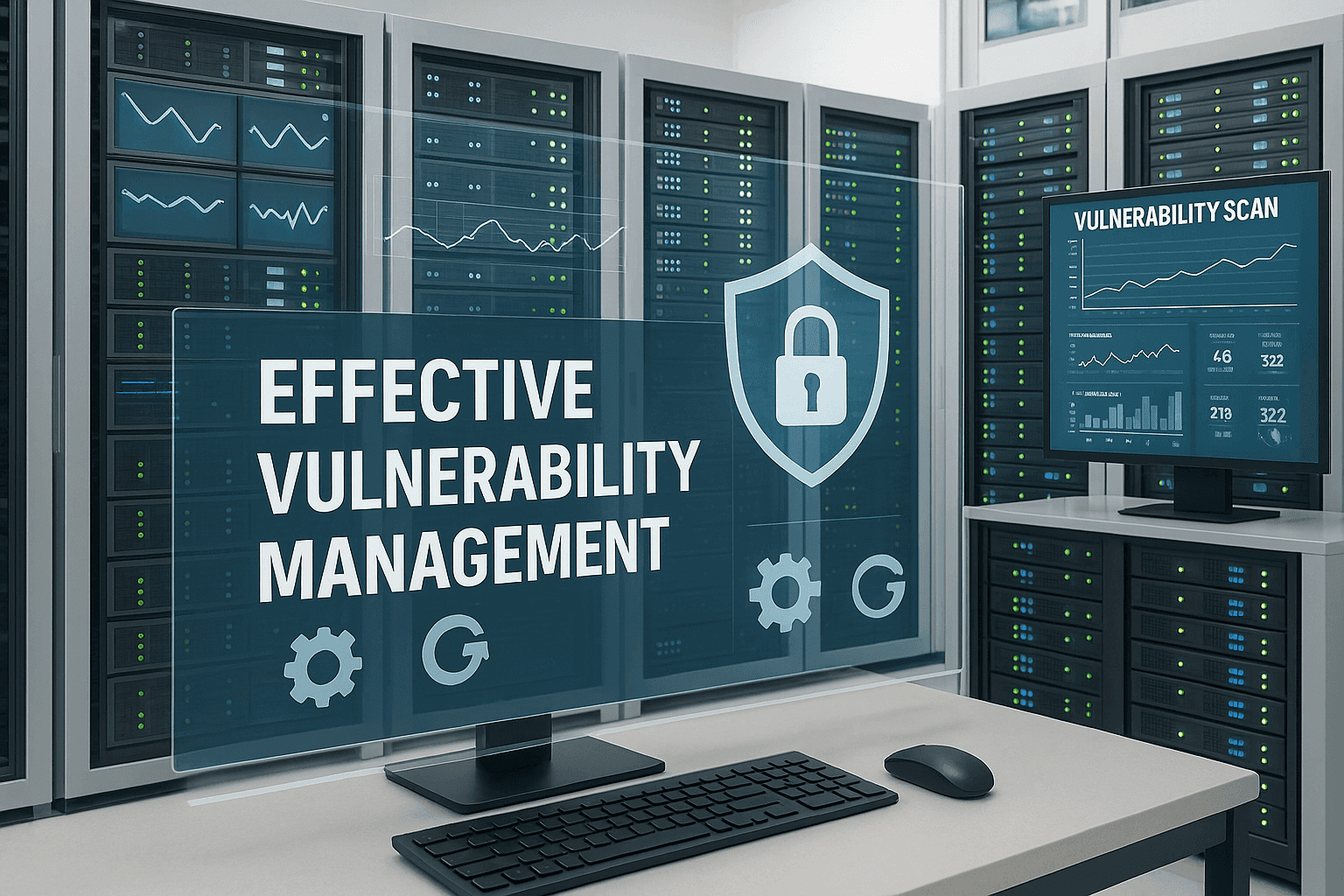
Tools for effective Vulnerability Management
An effective vulnerability management program necessitates the implementation of appropriate tools and strategies tailored to an organization's unique needs. Organizations have numerous options to choose from when selecting tools, and several factors should guide their decision-making process.
Selecting the Right Vulnerability Management Tools
The cybersecurity market offers a wide variety of vulnerability management tools, each with distinct features, functionalities, and price points. When evaluating potential tools, organizations should consider factors such as:
- Ease of use and user interface.
- Scalability to accommodate organizational growth.
- Comprehensive reporting and analytics capabilities.
- Integration with existing security infrastructure.
- Support for various operating systems and device types.
- Customization options for scan policies and reporting.
- Continuous updates to vulnerability databases.
- Compliance reporting features for relevant standards.
Vulnerability assessment tools that provide comprehensive reporting and analytics capabilities are invaluable. By enabling security teams to visualize and prioritize vulnerabilities effectively, these tools facilitate informed decision-making and more efficient remediation efforts.
Some popular vulnerability management tools include:
- Tenable.io: Cloud-based vulnerability management platform with extensive integration capabilities.
- Rapid7 InsightVM: Risk-based vulnerability management solution with real-time threat intelligence.
- Qualys VMDR: Vulnerability Management, Detection and Response platform with integrated threat intelligence.
- Nessus Professional: Comprehensive vulnerability scanner with a vast database of known vulnerabilities.
- OpenVAS: Open-source vulnerability scanner and management solution.
Ultimately, the selected tools should complement the organization's overall cybersecurity strategy and integrate seamlessly with existing systems and processes.
Roles and Responsibilities in Vulnerability Management
Vulnerability management is inherently collaborative and requires the active engagement of multiple stakeholders within an organization. Understanding the roles and responsibilities of vulnerability management is essential for effective implementation. The vulnerability management roles and responsibilities typically span across various departments, including IT, security, and executive leadership.
- Executive Leadership:
- Provide strategic direction for the vulnerability management program.
- Allocate necessary resources (budget, personnel, tools).
- Ensure compliance with relevant regulations and standards.
- Foster a culture of security awareness throughout the organization.
- Chief Information Security Officer (CISO):
- Develop and oversee the implementation of the vulnerability management strategy.
- Report on the organization's security posture to the board and executive leadership.
- Ensure alignment between vulnerability management and overall business objectives.
- IT and Security Teams:
- Conduct vulnerability assessments and analyze results.
- Implement security protocols and patch management processes.
- Respond to and mitigate identified vulnerabilities.
- Maintain and update vulnerability management tools and systems.
- System and Network Administrators:
- Apply patches and updates to systems and applications.
- Implement security configurations based on vulnerability assessment findings.
- Assist in troubleshooting issues arising from remediation efforts.
- Application Developers:
- Address vulnerabilities in custom-developed applications.
- Implement secure coding practices to prevent introduction of new vulnerabilities.
- Collaborate with security teams to resolve identified application vulnerabilities.
- Risk Management Team:
- Assess the business impact of identified vulnerabilities.
- Assist in prioritizing vulnerabilities based on risk to the organization.
- Develop risk mitigation strategies for high-impact vulnerabilities.
- Compliance Team:
- Ensure vulnerability management processes align with regulatory requirements.
- Assist in generating compliance reports based on vulnerability assessment data.
- Keep abreast of changes in compliance standards that may affect vulnerability management.
- End Users:
- Follow security best practices and policies.
- Report suspicious activities or potential vulnerabilities.
- Participate in security awareness training programs.
These teams must work closely together, ensuring that their objectives align and that communication flows effectively between departments. Training and awareness initiatives are also essential. Equipping employees throughout the organization with the knowledge required to contribute to maintaining the organization's security posture fortifies the overall defense.
By promoting a culture of security awareness, organizations empower employees to identify potential threats and actively participate in risk reduction efforts. This collective approach to vulnerability management enhances the organization's ability to detect, respond to, and mitigate security risks effectively.
Implementing a Vulnerability Management System
Once organizations have identified the appropriate tools, the next step is to implement a vulnerability management system. This process entails:
- Configuring tools to align with the organization's environment.
- Integrating the chosen tools with existing systems and operations.
- Establishing scanning schedules and policies.
- Defining roles and responsibilities within the vulnerability management process.
- Creating procedures for vulnerability triage and remediation.
- Developing reporting mechanisms for stakeholders at various levels.
It's essential to recognize that a vulnerability management system is not static; it requires continuous management and optimization to maintain effectiveness over time. Organizations should adopt a proactive stance, regularly evaluating the system's performance and making necessary adjustments based on evolving industry best practices and technological advancements.
Modino.io’s Role in Empowering Vulnerability Response Across Teams
Vulnerability management isn’t just a tooling problem—it’s a coordination challenge across roles. Modino.io bridges that gap by enabling fast, verifiable, and secure software updates directly to edge and IoT devices, empowering every stakeholder in the security chain.
- For IT and Security Teams: Modino.io streamlines the deployment of critical patches and configuration updates, ensuring that remediation actions triggered by scans are executed quickly and consistently, even in complex, distributed environments.
- For Developers: Our system supports the secure rollout of application updates that address code-level vulnerabilities or third-party dependency flaws. With support for signed artifacts and immutable version tracking, development teams can ship fixes with confidence and control.
- For Compliance and Risk Officers: Modino.io ensures traceability and proof-of-deployment, simplifying audit trails and compliance reporting. Integration with vulnerability management tools enables responsive and policy-aligned mitigation workflows.
- For Executive Leadership: Modino.io adds transparency and reliability to the last mile of vulnerability mitigation—software delivery—ensuring strategic investments in detection are not lost in operational friction.
In short, Modino.io helps translate vulnerability detection into real-world impact by accelerating the secure propagation of fixes across your IoT ecosystem. From boardroom to device, we turn strategy into execution.
Go back to Articles